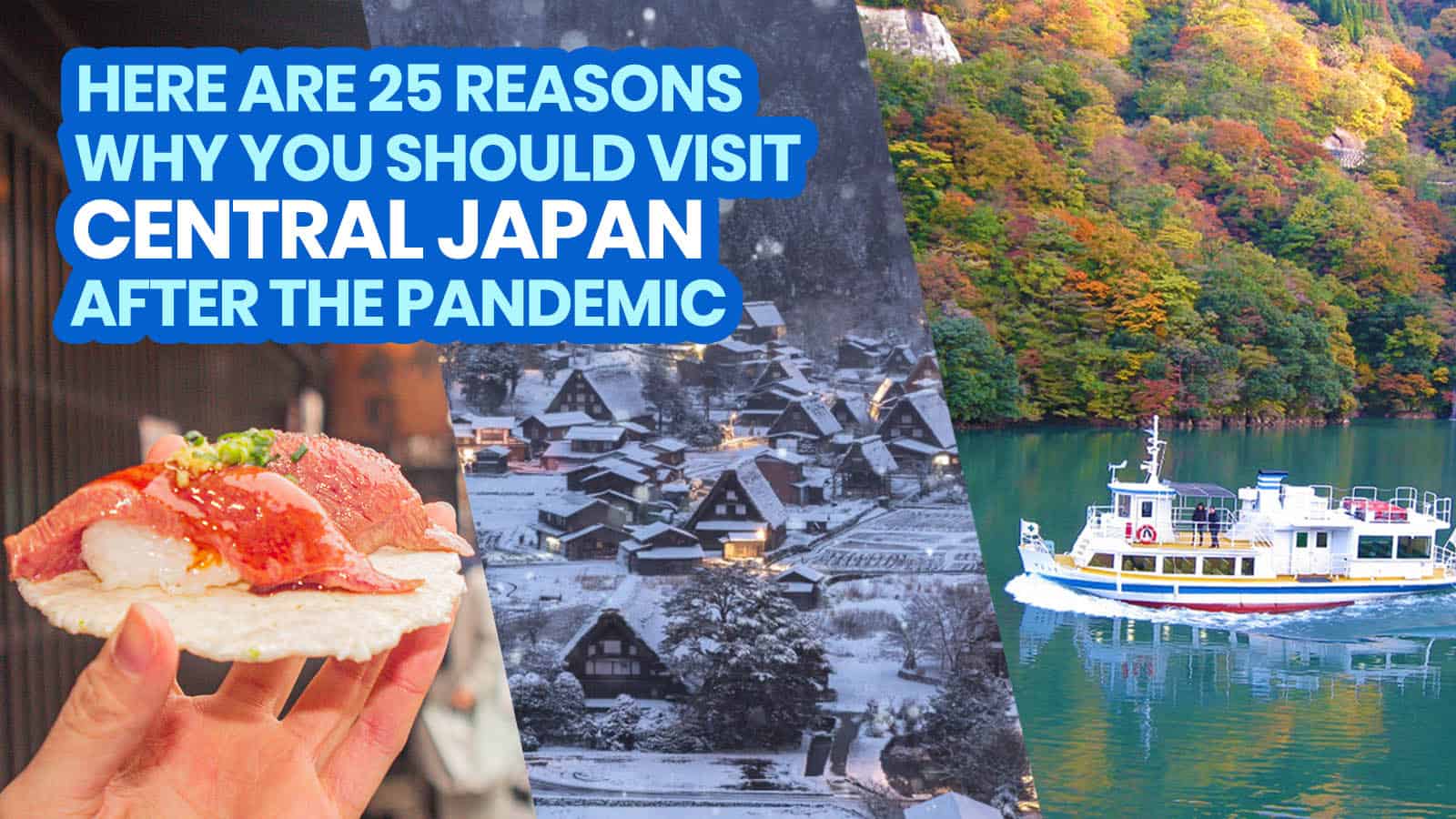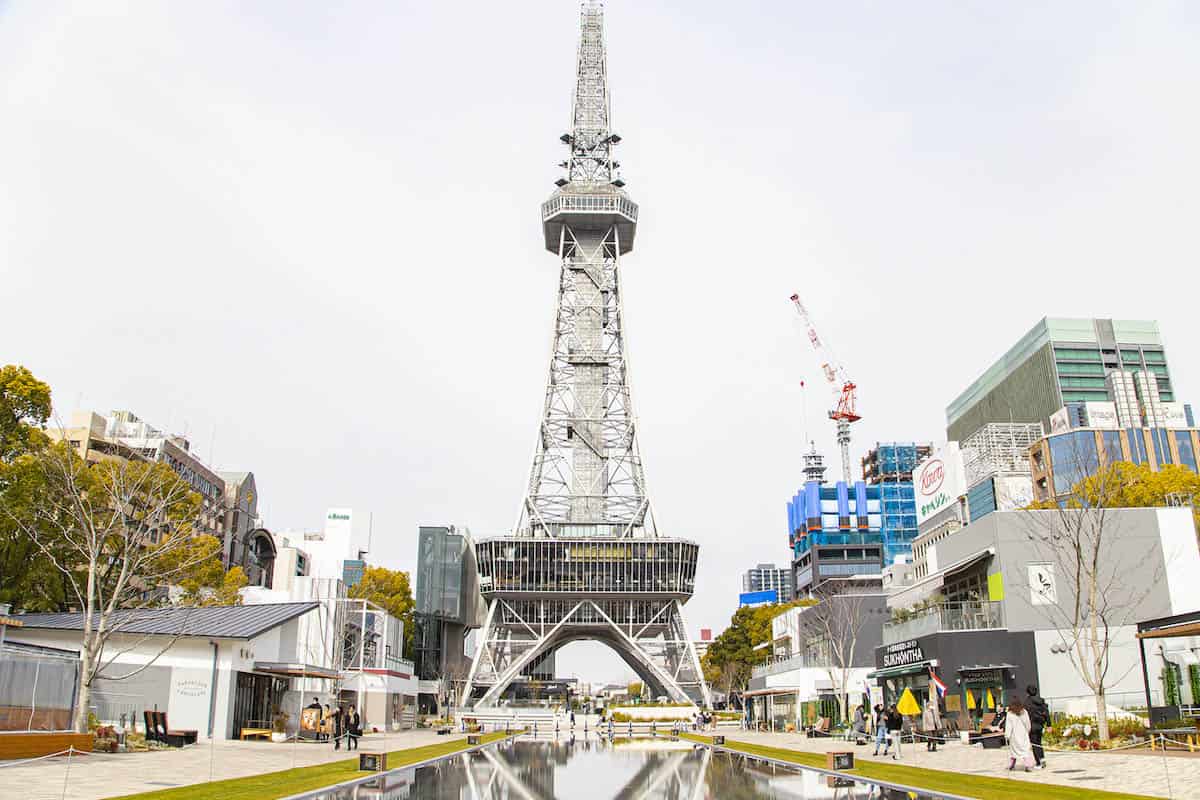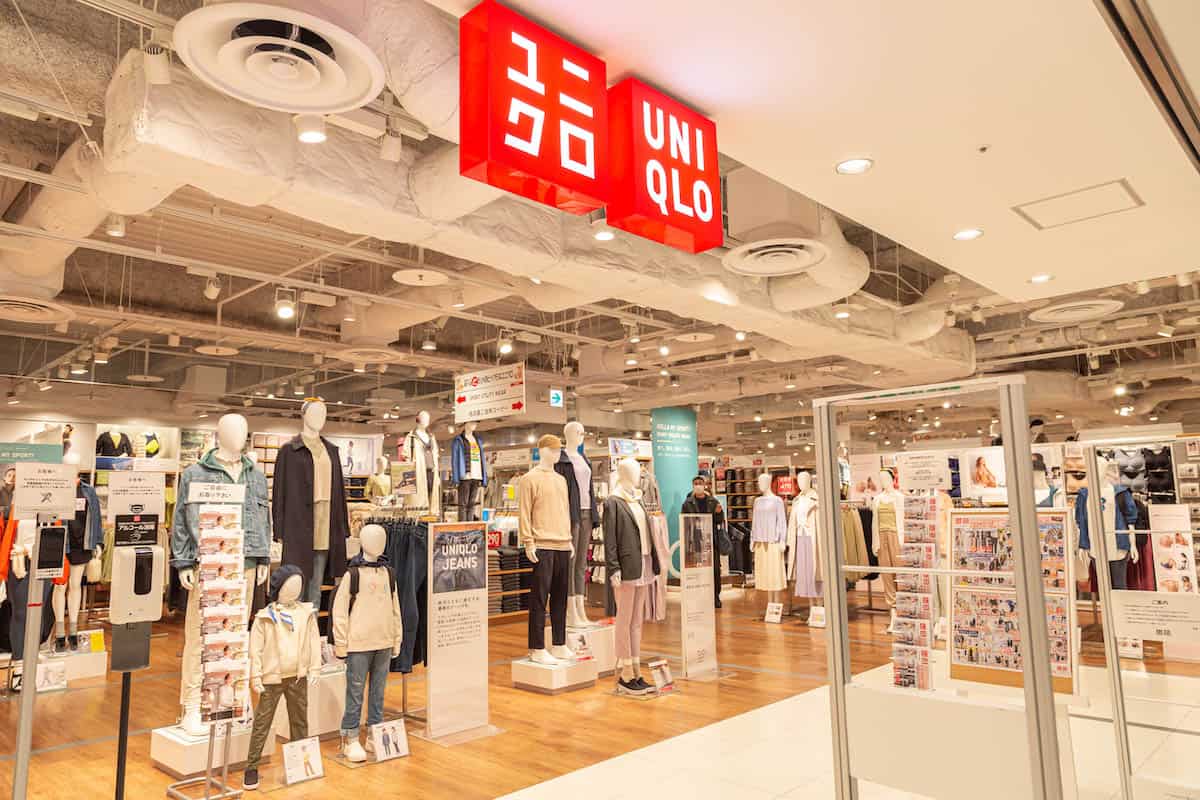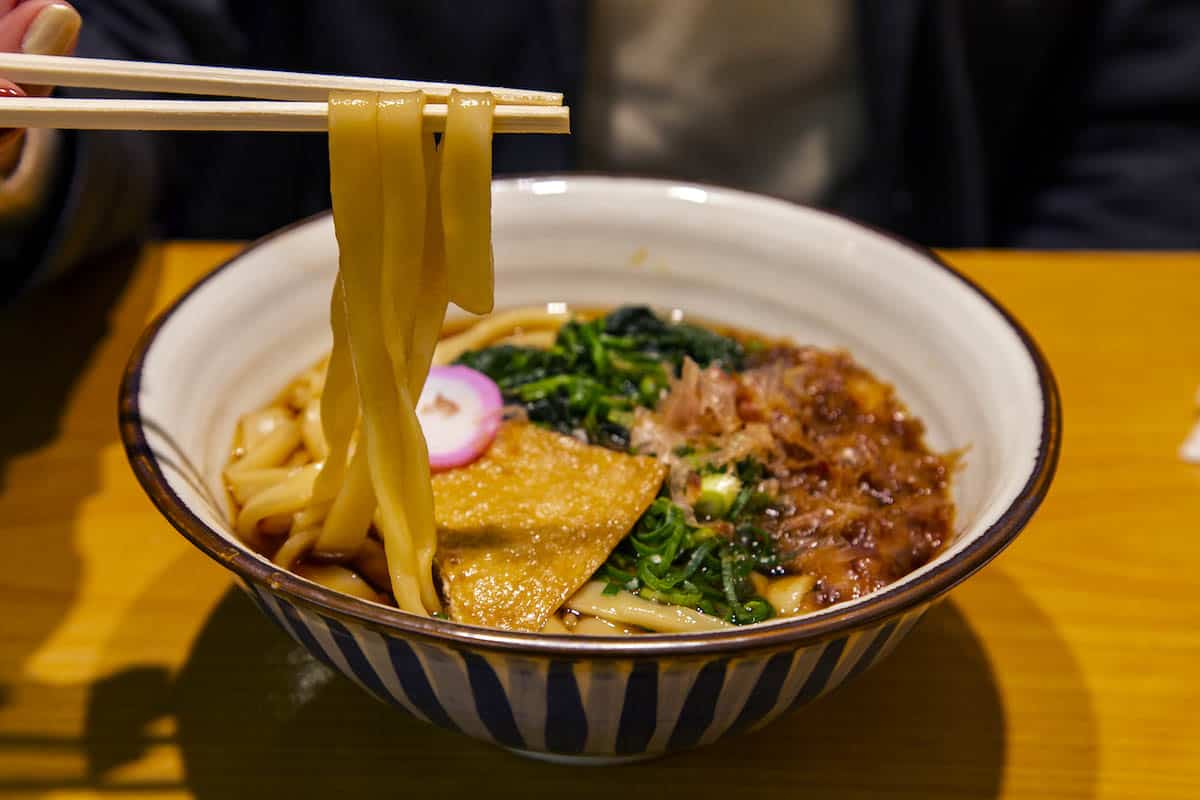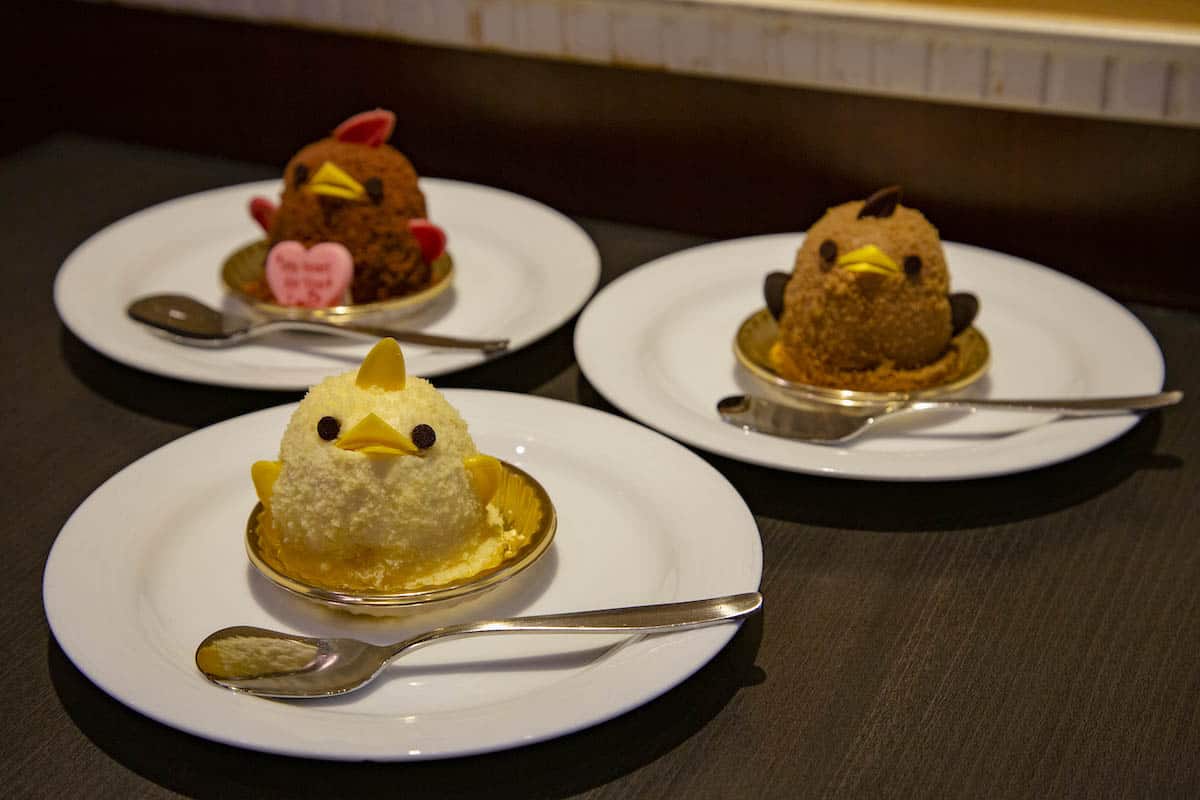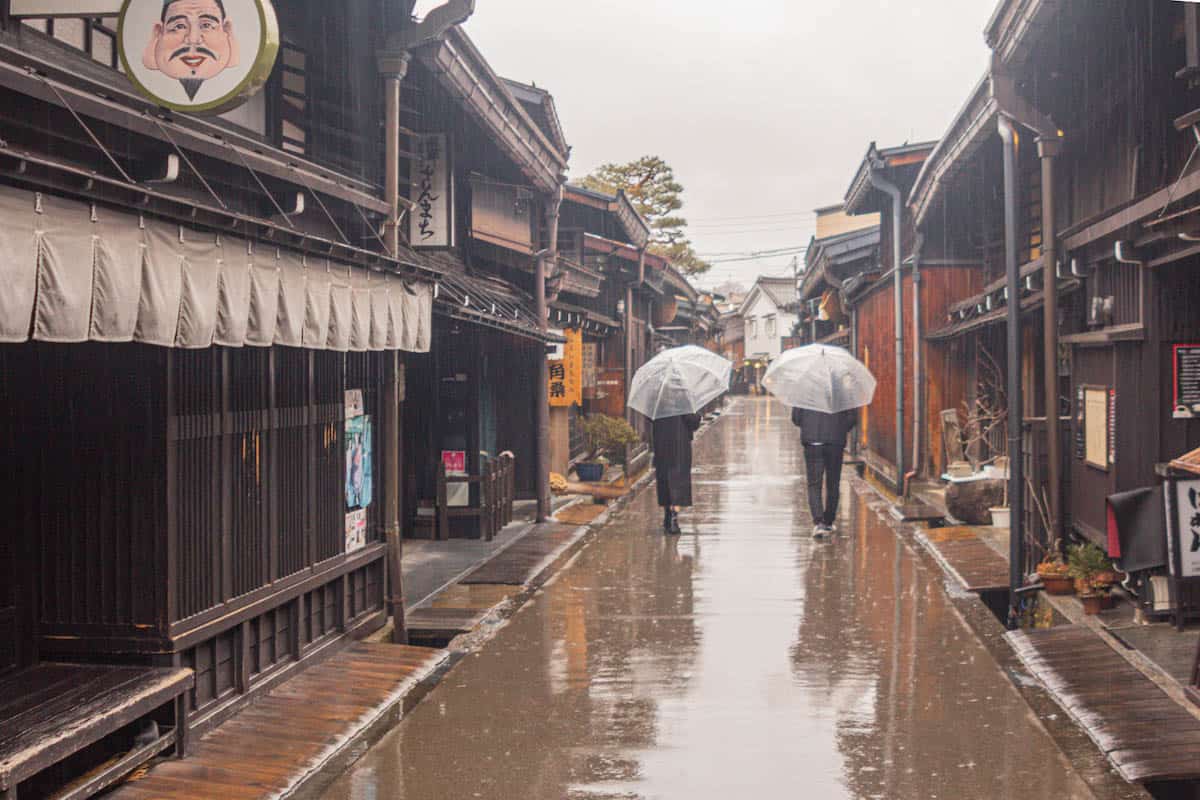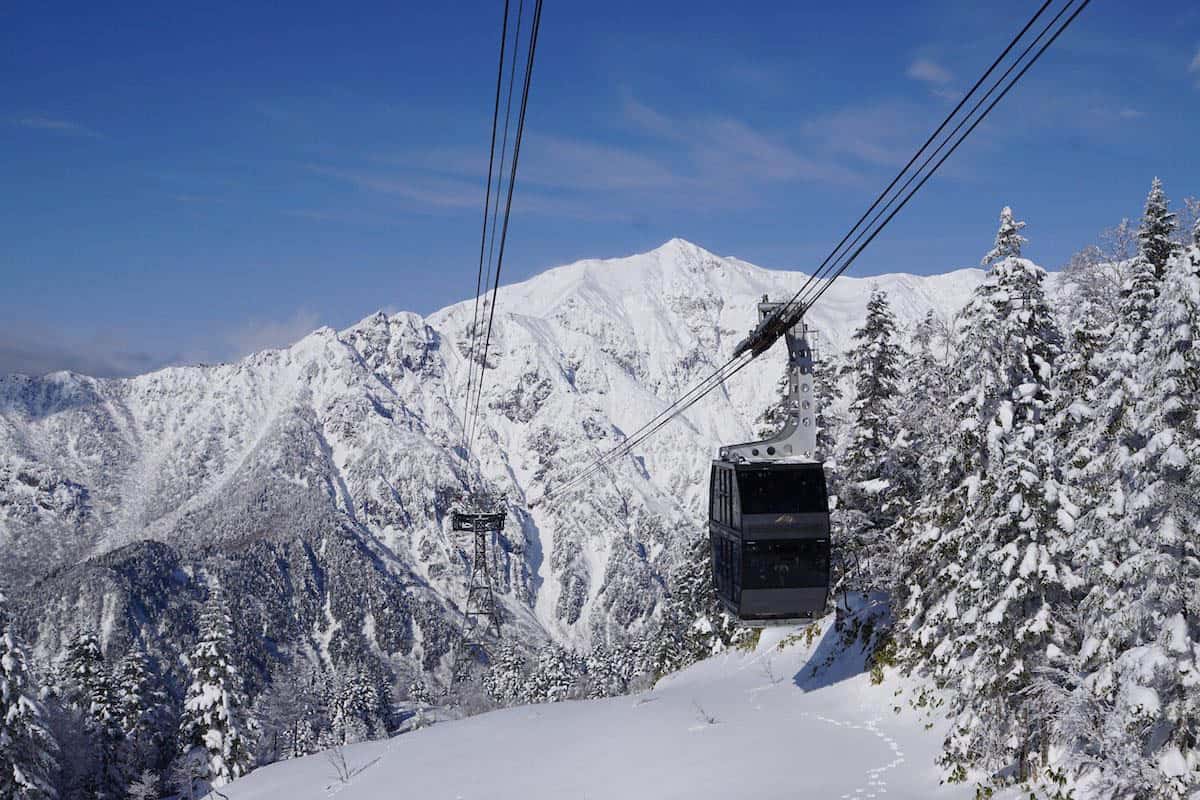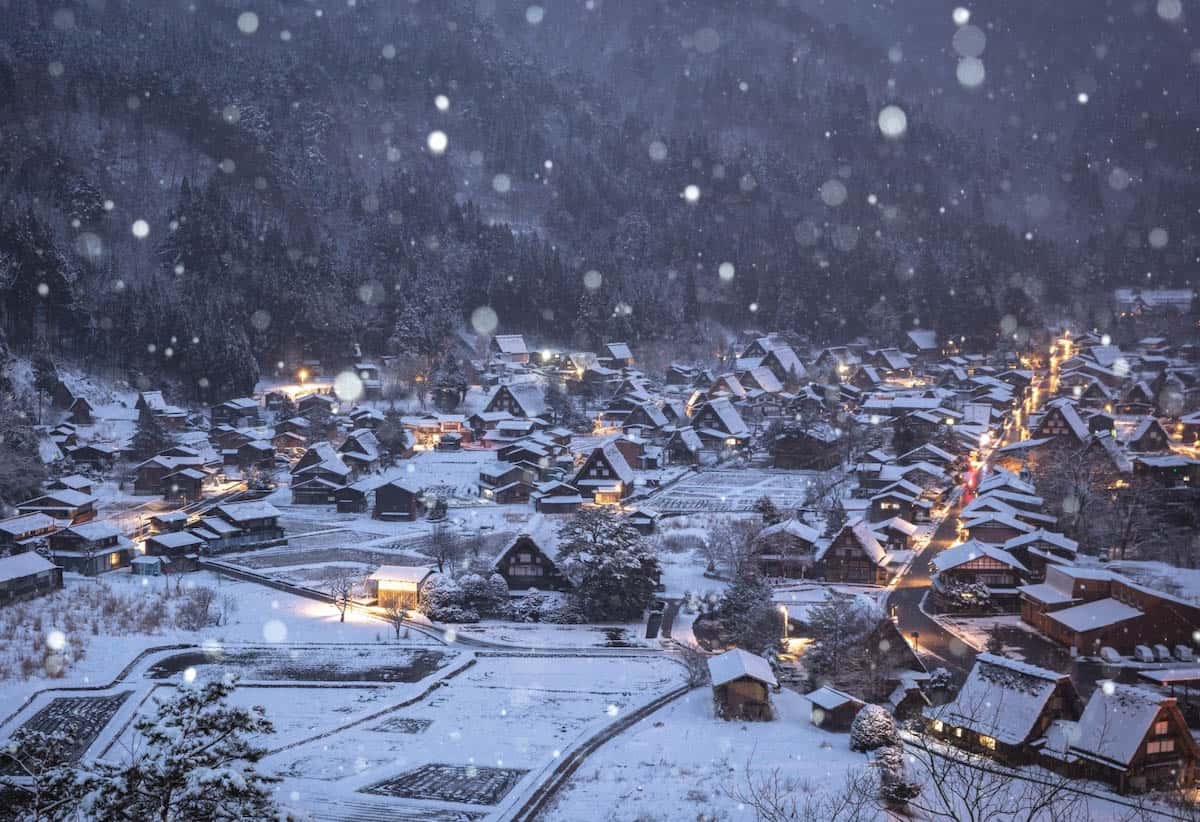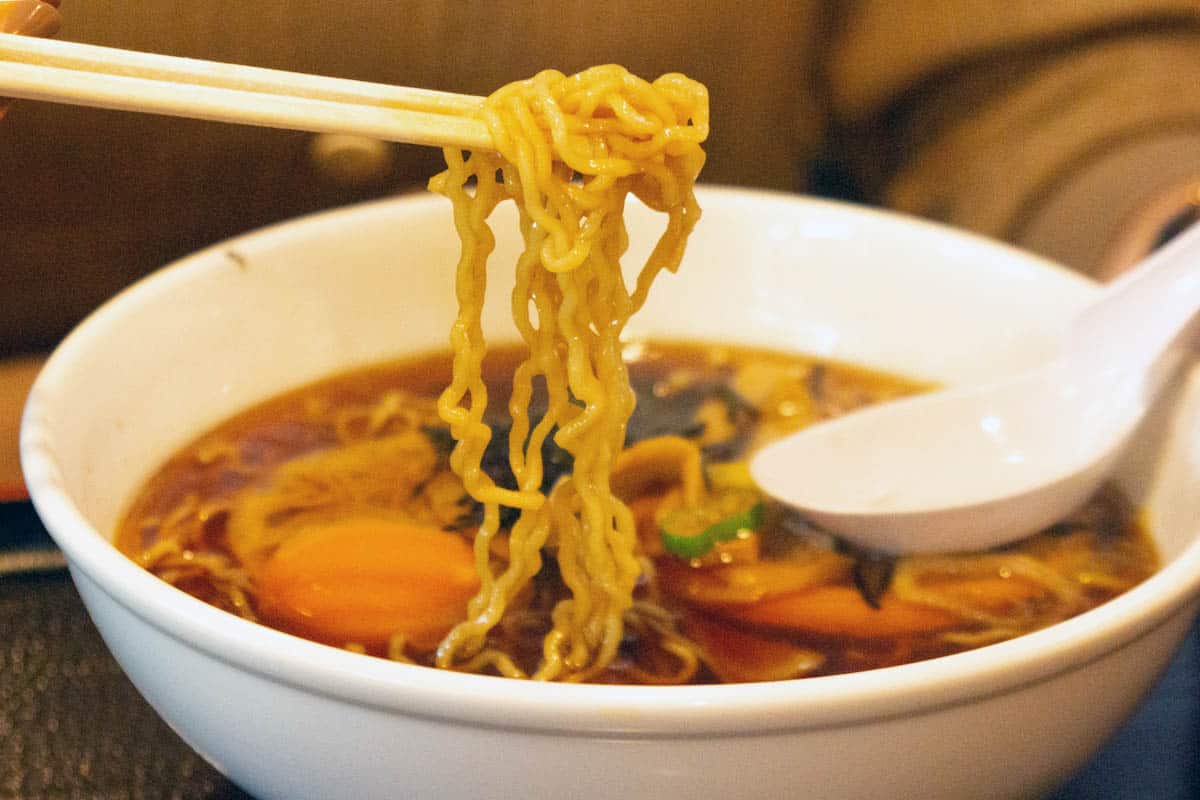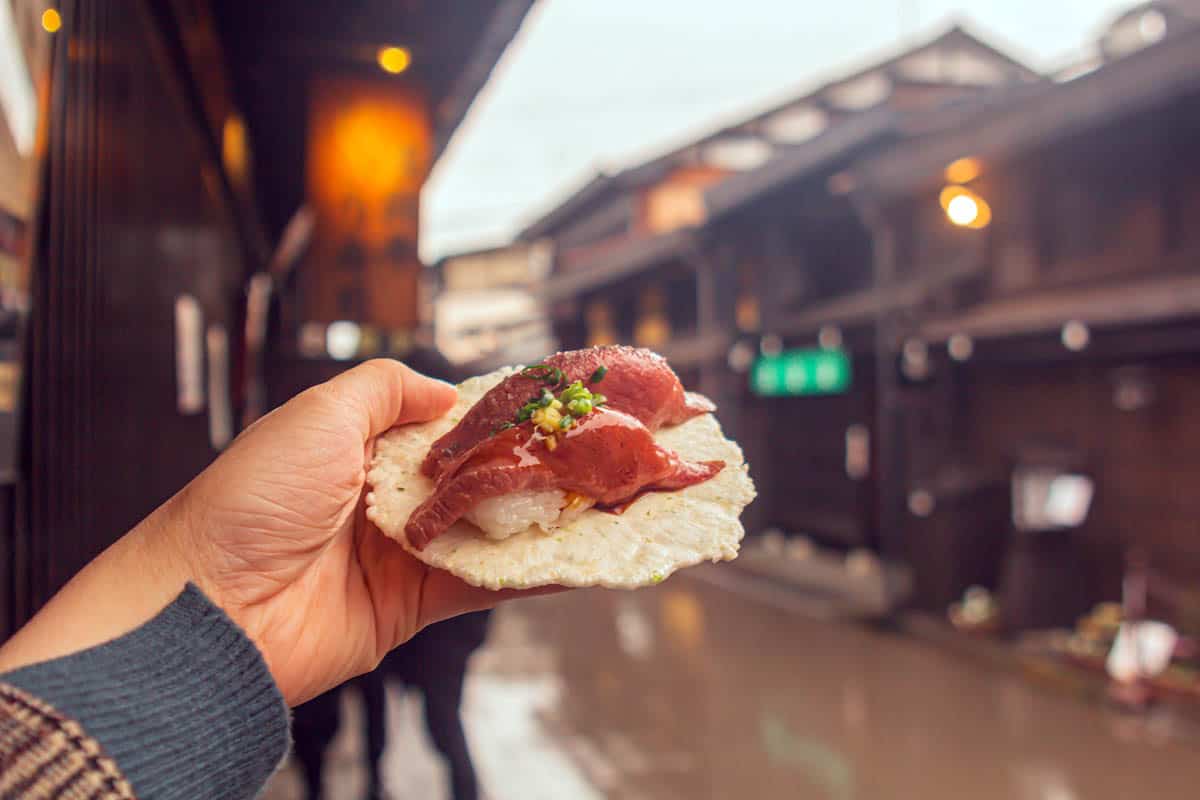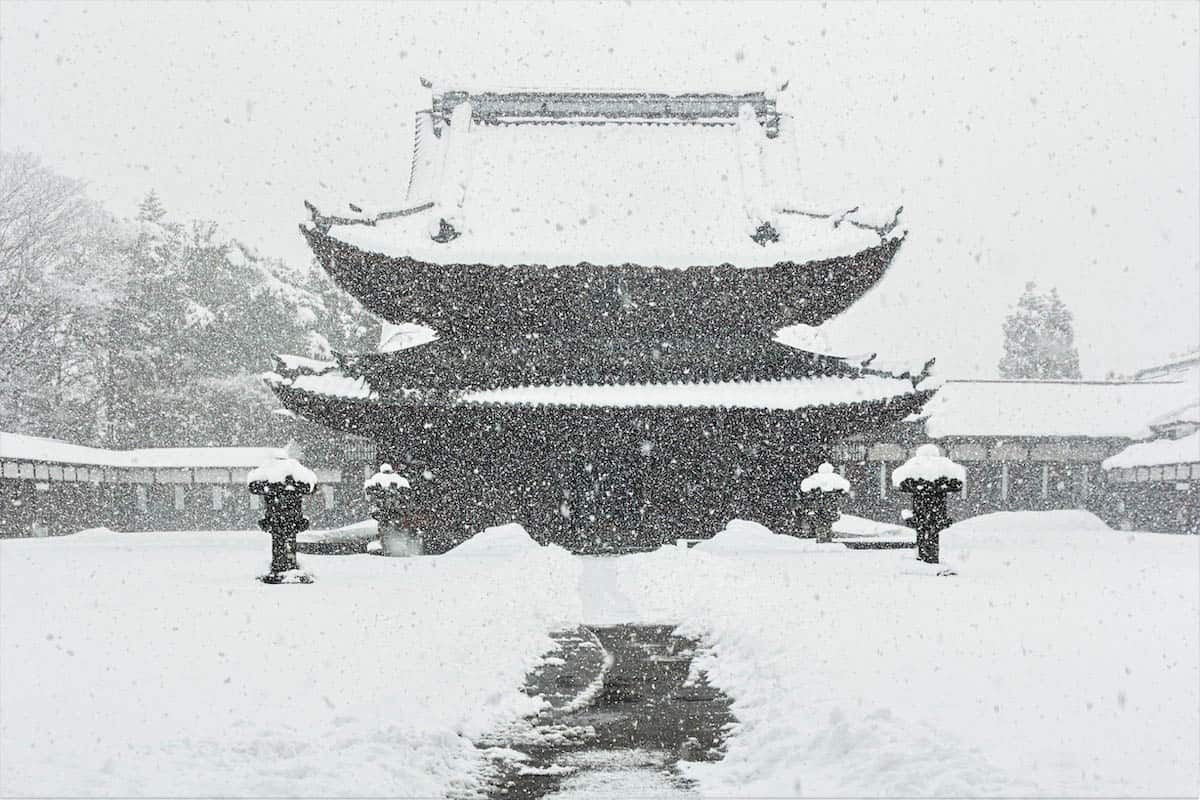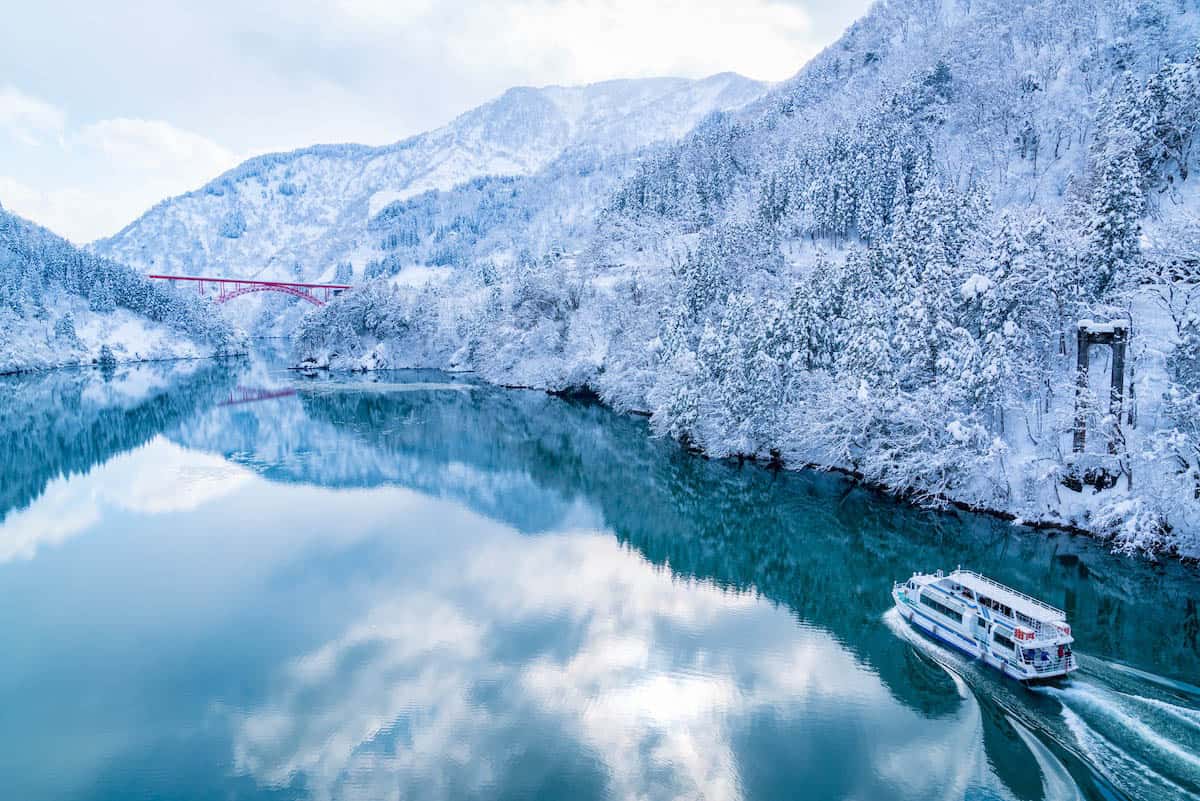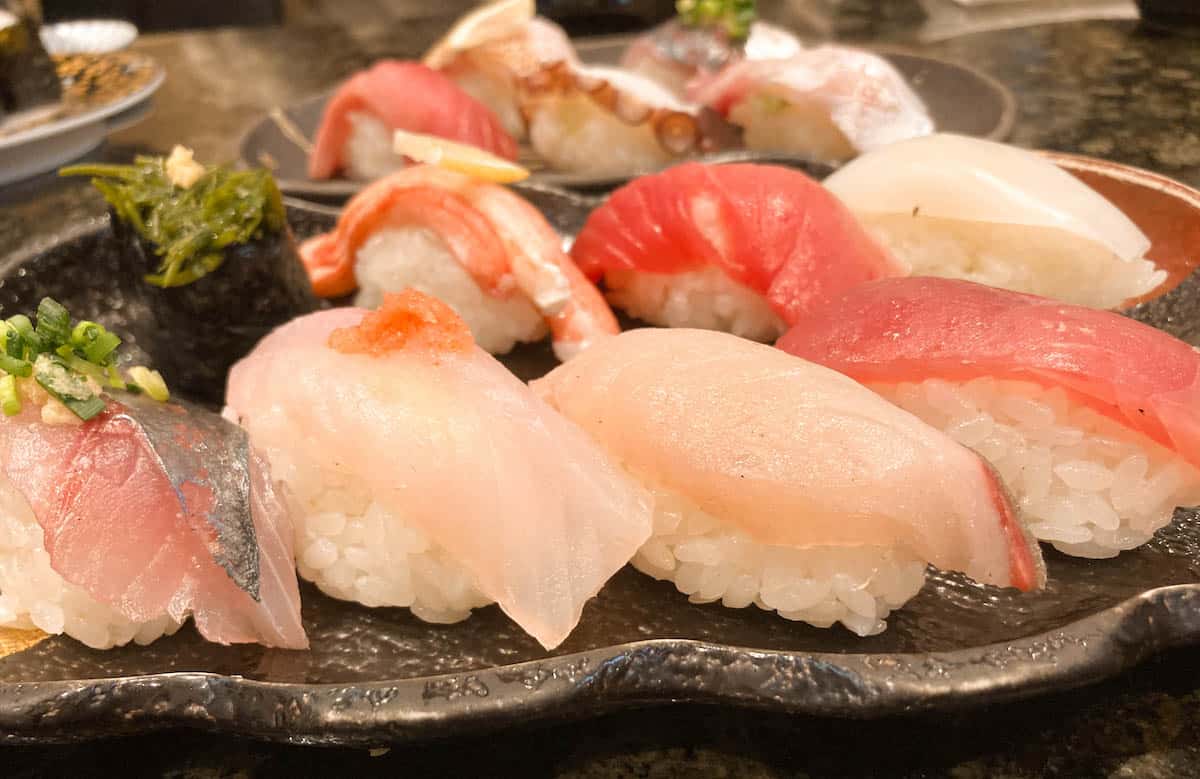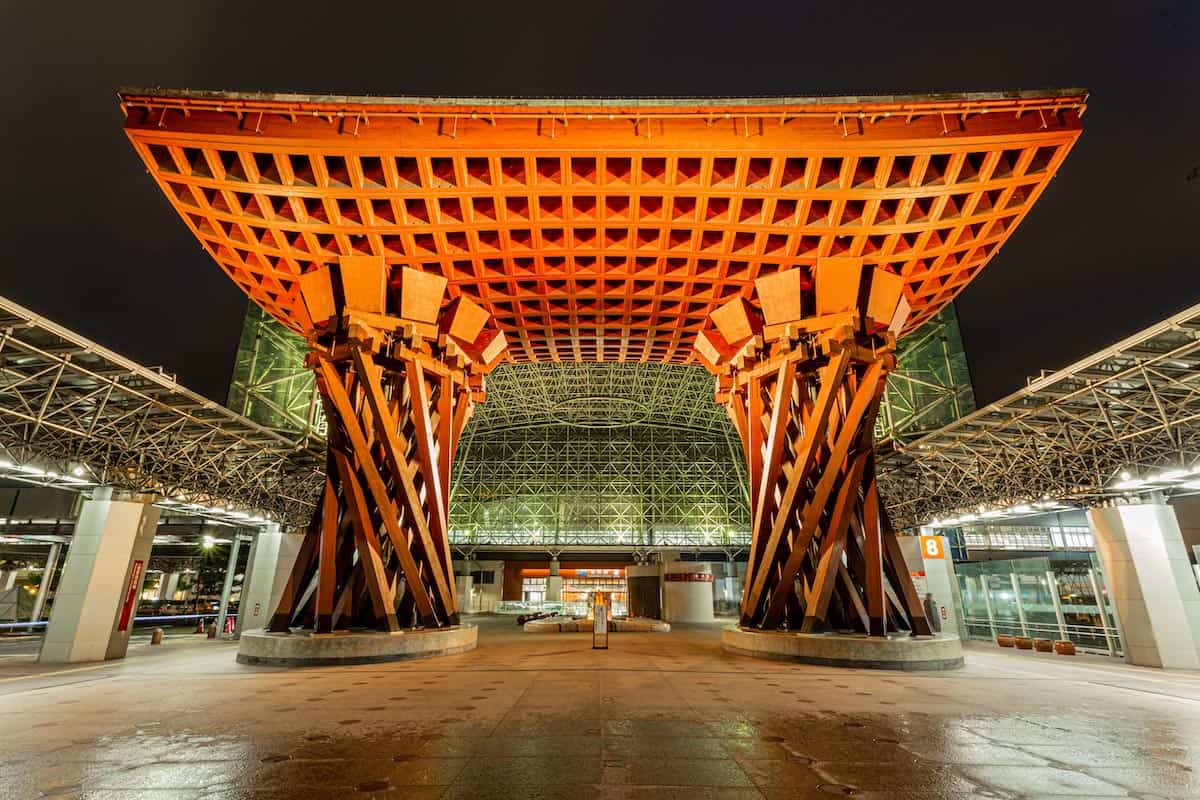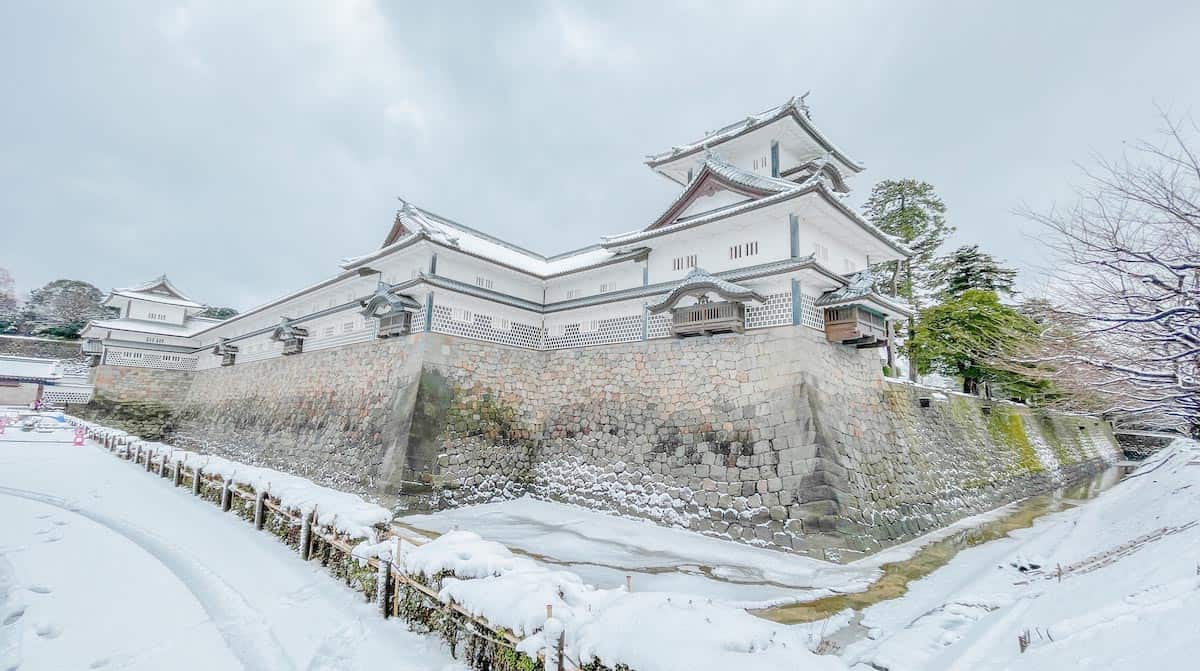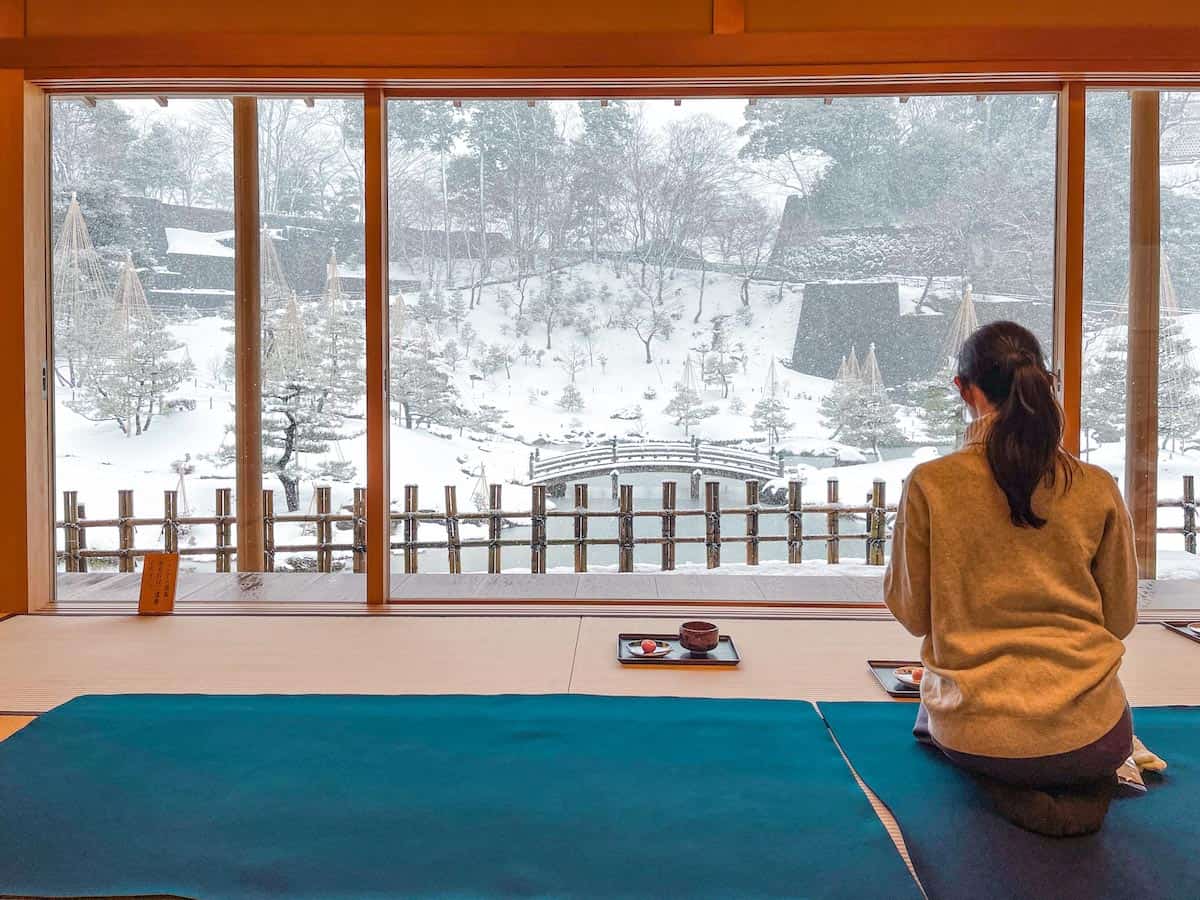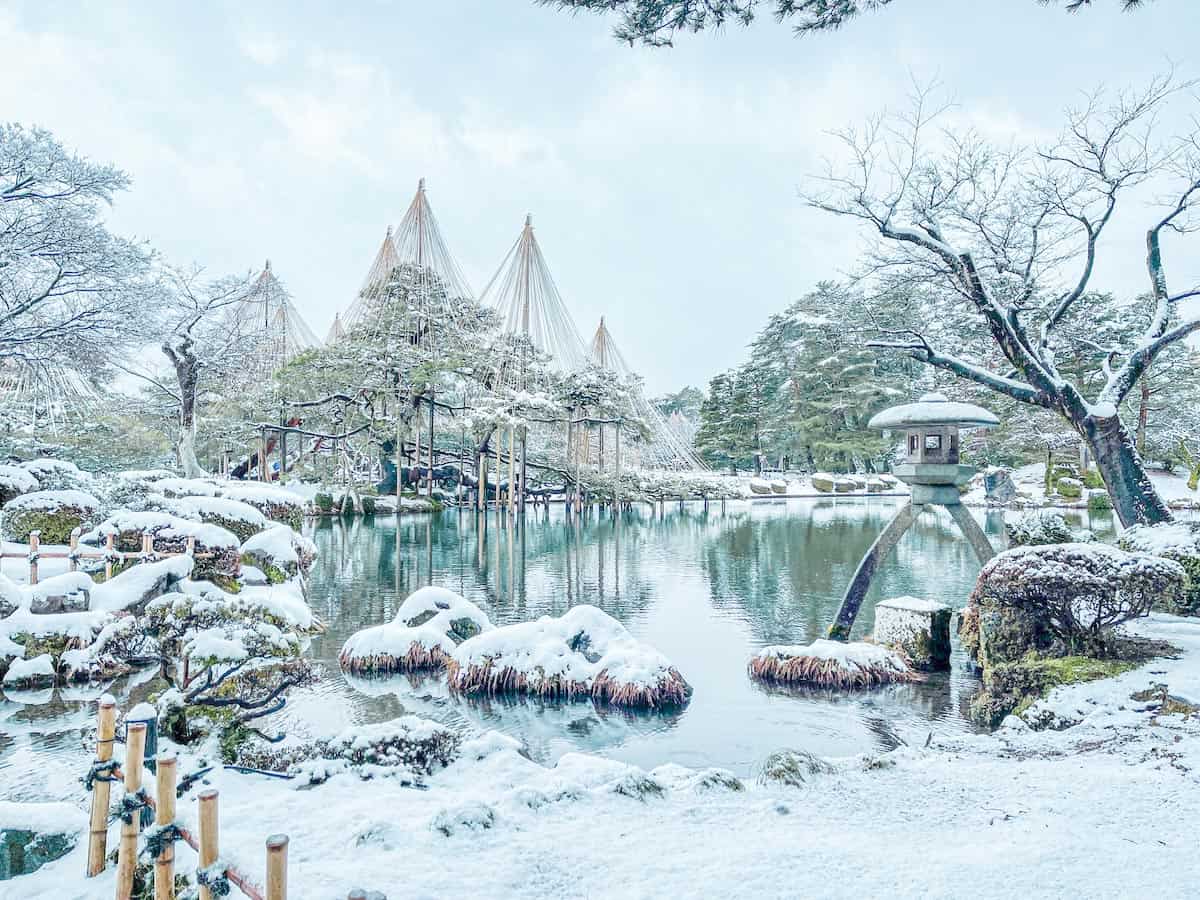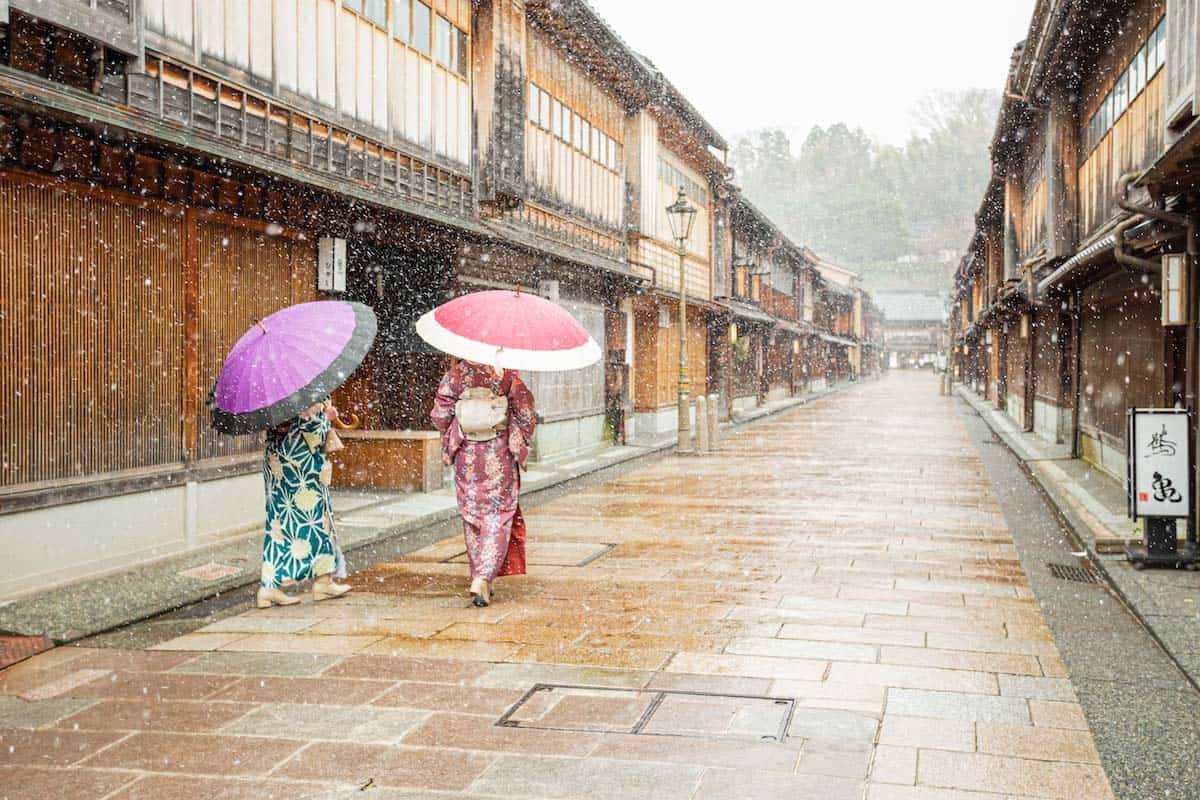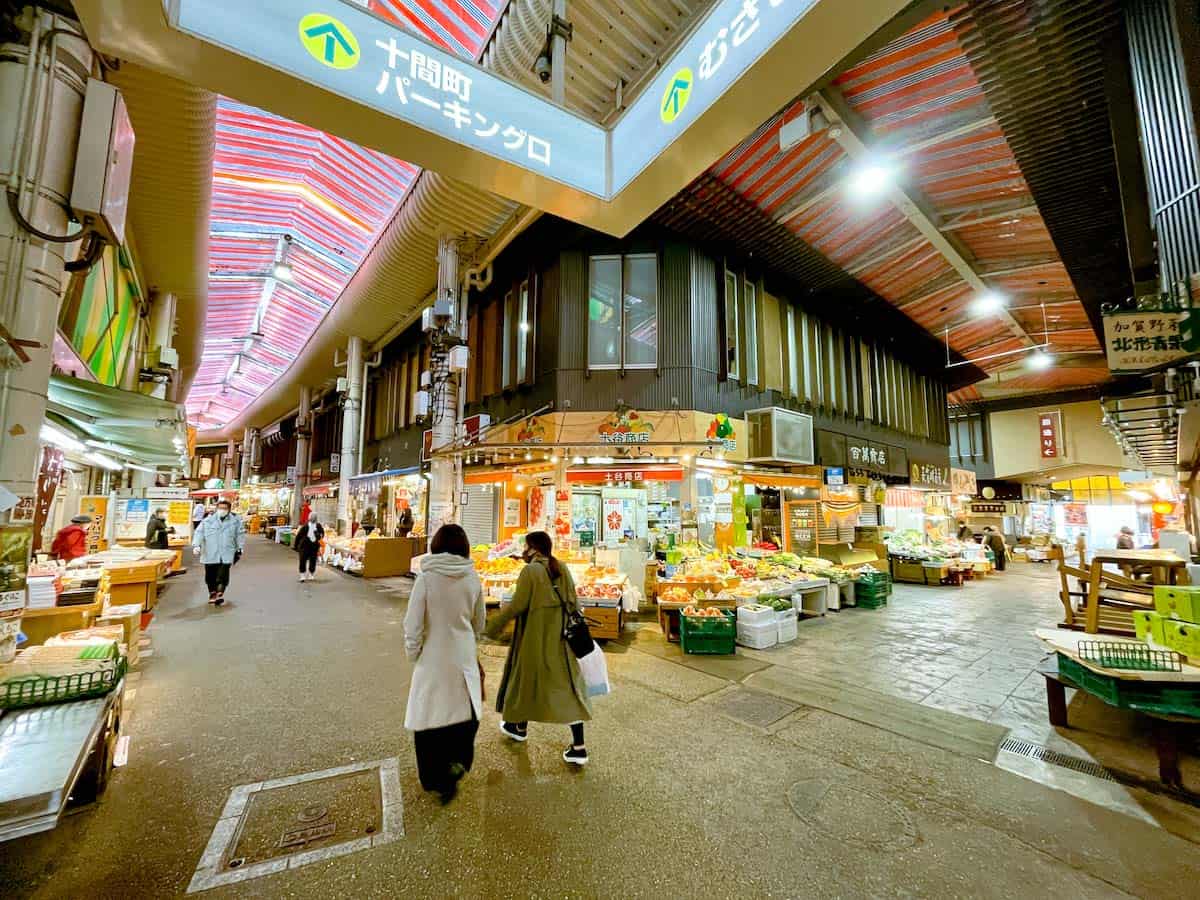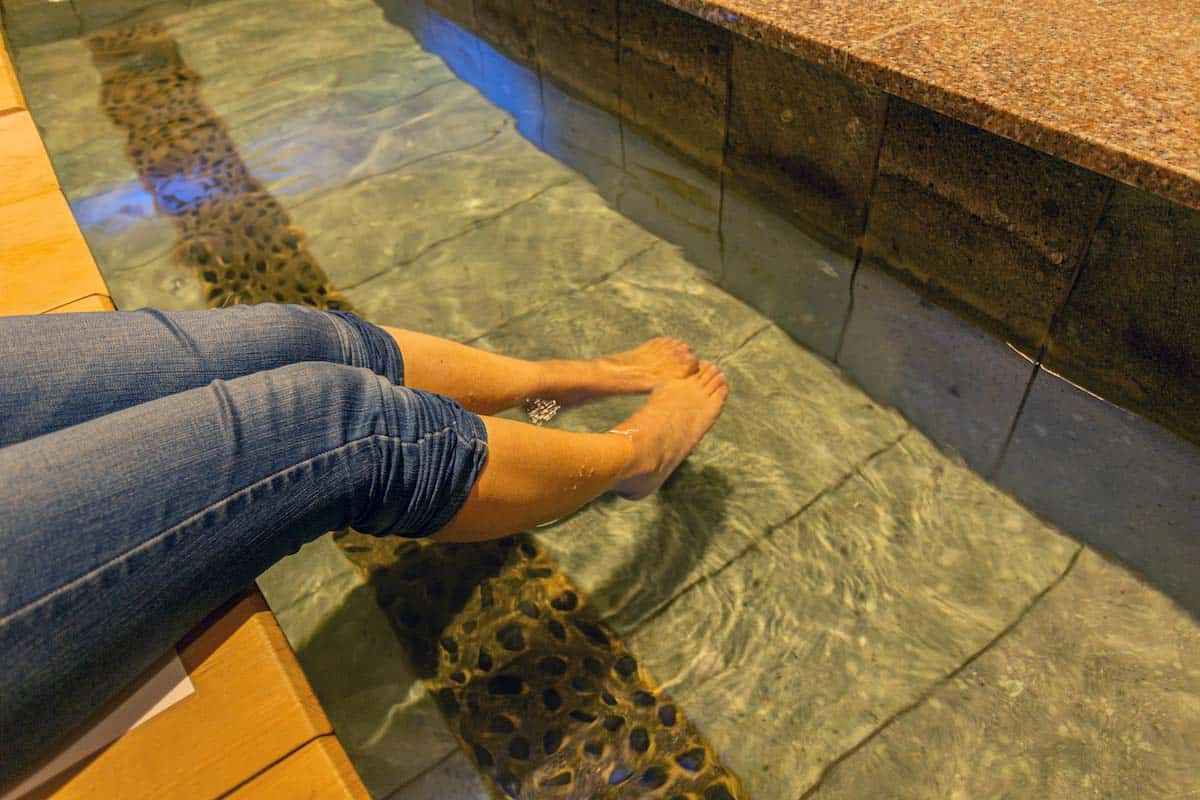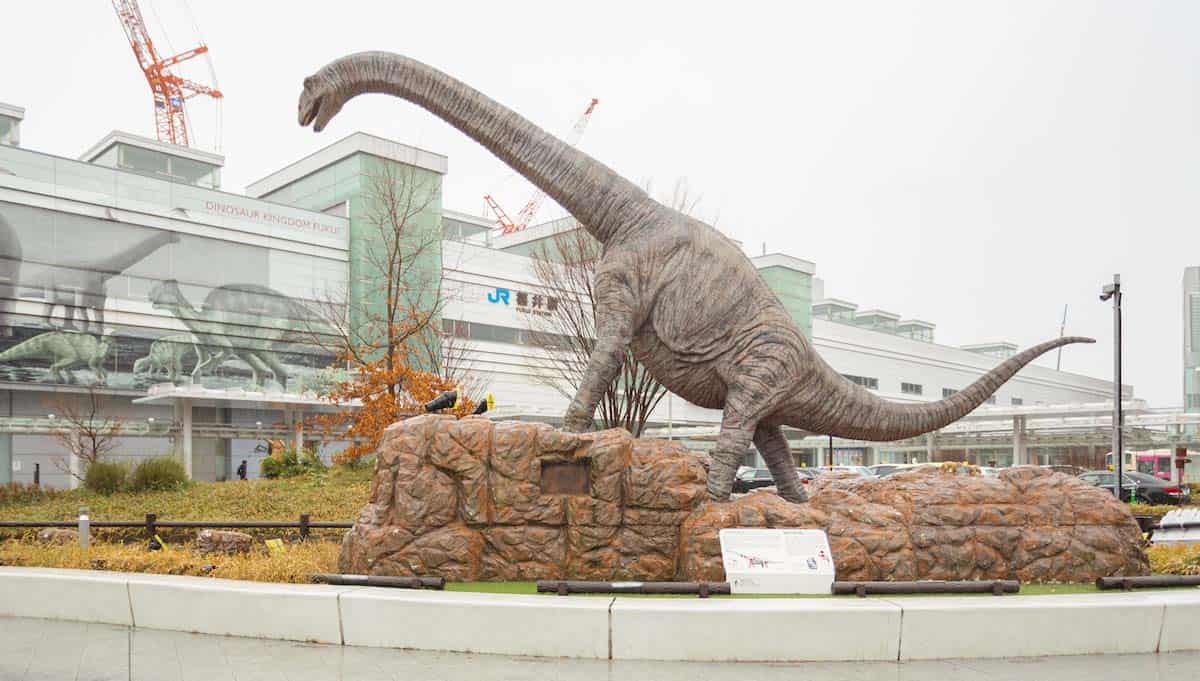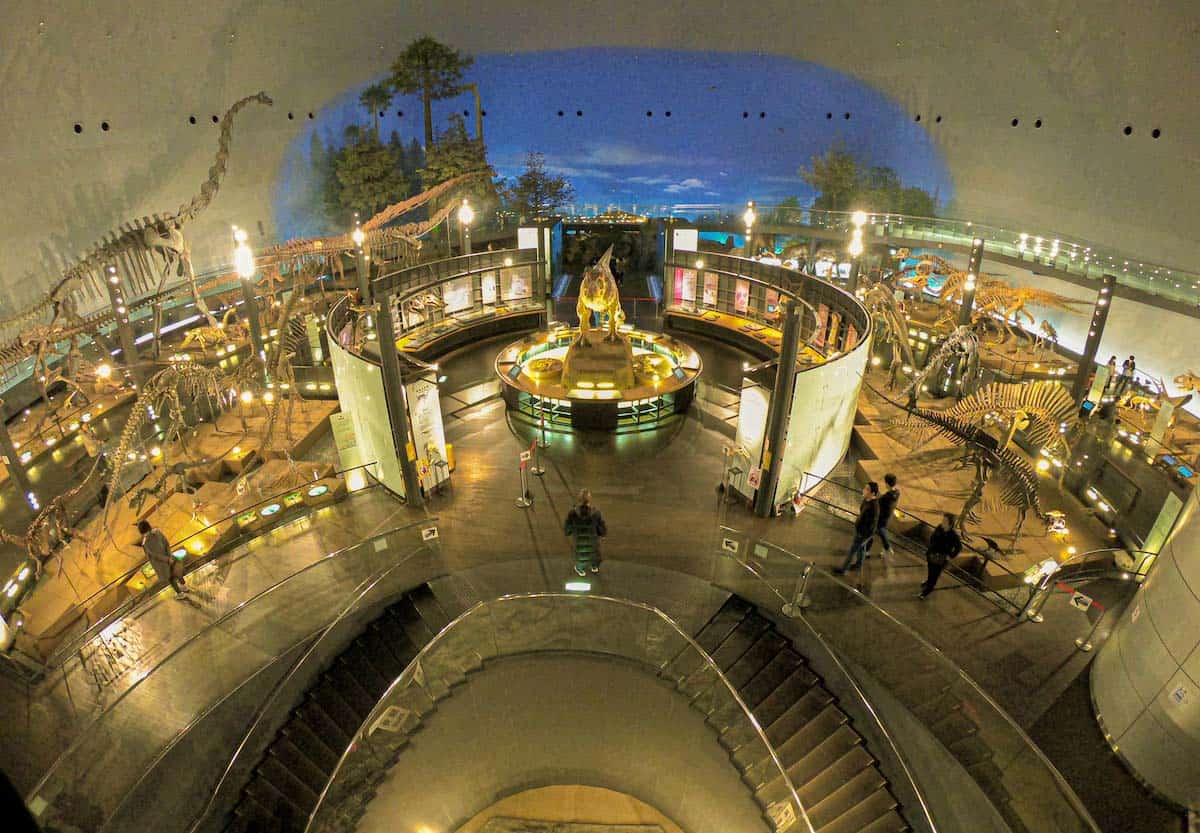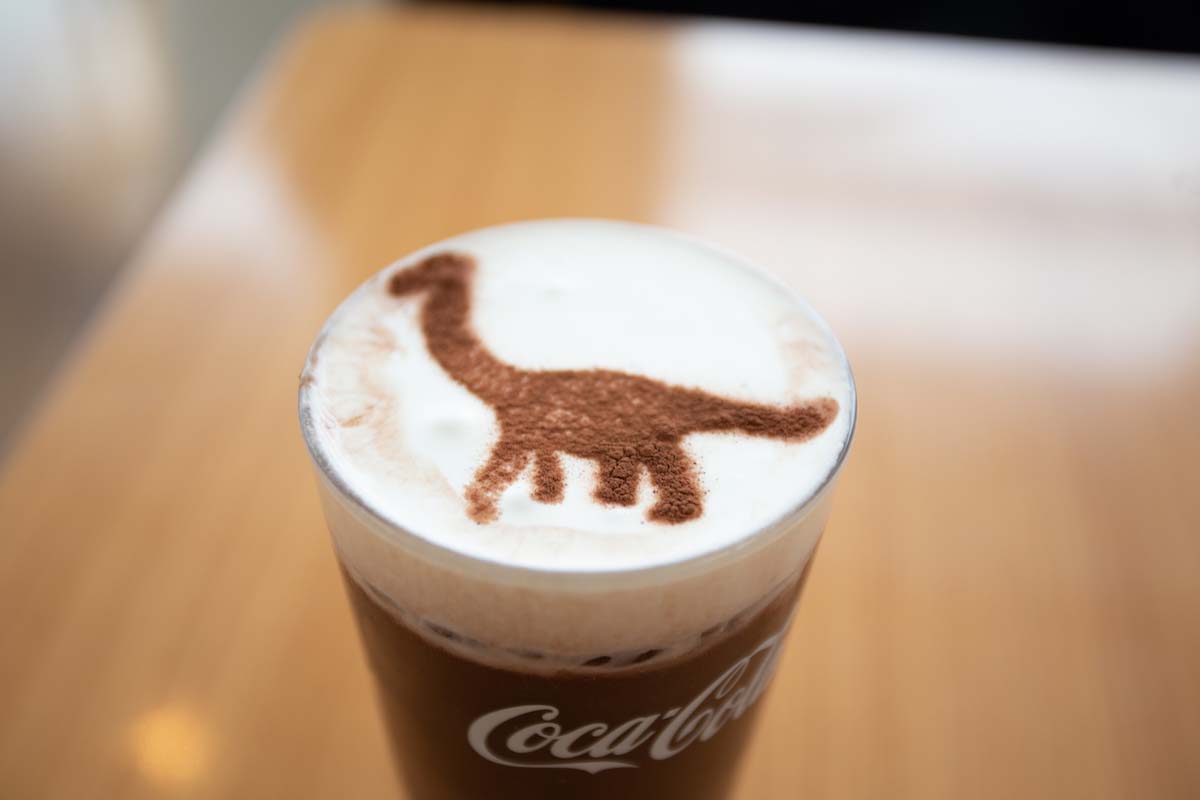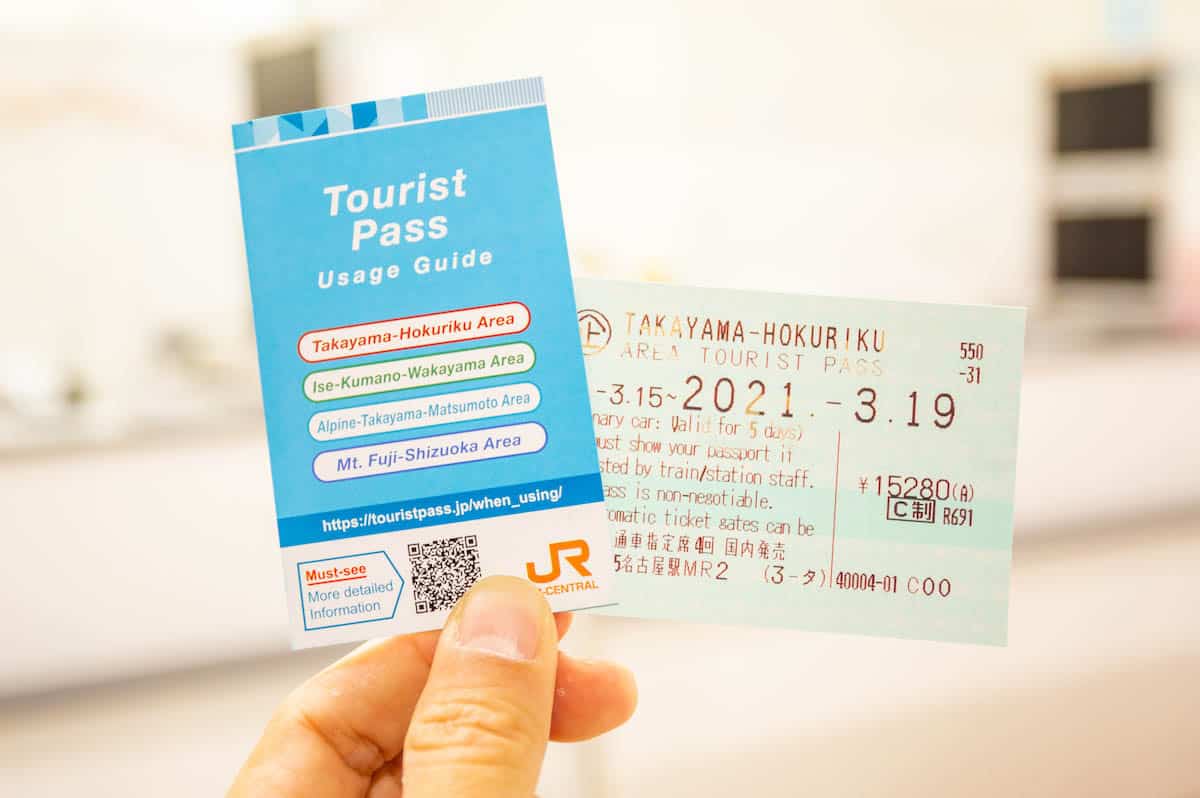The team had been to the Central Japan Region five times in total, but the experience was different every time we return. In fact, there are still other areas we haven’t explored further.
Central Japan, also called Chubu Region, is home to natural wonders like Mount Fuji and the mighty Japanese Alps, UNESCO World Heritage Sites Shirakawa-go and Gokayama, cultural sites such as Kanazawa and Takayama, national parks such as Fukui’s Tojinbo cliffs and Katsuyama Dinosaur Forest Park, and famous onsen areas among others.
If you are planning to explore Japan’s Chubu Region and you are giving yourself at least five days, you might want to consider getting the Takayama-Hokuriku Pass. More about this pass at the end of this article. Meanwhile, here are some of the things to look forward to when you visit Central Japan.
Nagoya TV Tower
Constructed in 1954 to mark the rebuilding of the city after World War II, the Nagoya TV Tower is believed to be the first and oldest TV transmission tower in Japan.
At 180 meters, it offers two viewing areas — the indoor Sky Deck at 90 meters from the ground and the outdoor Sky Balcony at 100 meters from the ground. The tower also has restaurants, shops, a multi-purpose space, cafés, and the Tower Hotel.
When nighttime hits, you will see the lights illuminating it, presenting the tower in a different “light”, literally. From the observatory, the city skyline is hailed as one of Japan’s Night View Heritage in 2013. The tower is also declared one of the country’s tangible cultural properties in 2005 for its historic, artistic, and academic importance.
Takashimaya Gate Tower Mall
Located right next to the towering JR Nagoya Takashimaya and adjacent to JR Nagoya Station, the JR Takashimaya Gate Tower Mall is a shopping mall housing a bus terminal on the ground floor. It houses shops that offer cosmetics, fashion, and electronics. It also has cafés (on almost all of the floors), restaurants, and a bakery.
The 9th and 10th floors are occupied by Bic Camera, one of the largest electronics and home appliance retailers in Japan. It’s the go-to place for techies, gamers, and gadget hunters. If you are a fan of Uniqlo and its budget sister company GU, the 11th floor is your shopping paradise!
Most floors of JR Takashimaya Gate Tower Mall are linked to JR Takashimaya by walkways, making it more convenient and easy for people to navigate between the two shopping malls. Don’t forget to bring your passport when you go shopping to avail of the tax-free incentive when your total purchase hits a certain amount.
Kishimen
Nagoya Meshi (Nagoya Cuisine) is the distinct regional cuisine of the city and the other surrounding areas in the Chubu region. The flavor is the result of incorporating miso or tamari (soy sauce) ingredients, which are mainly produced in Central Japan.
Kishimen is one of the local and specialty dishes. It is a noodle dish with distinctly flat slippery udon noodles. It is usually dipped in a soy sauce soup with leeks and other seasonings. For a flat noodle to be considered “kishimen” by Japanese standard, it should be wider than 4.5mm and should not be thicker than 2mm.
The recommended Nagoya kishimen is the miso stewed udon, which is served at many restaurants throughout the city. Kishimen can also be paired with hot soup, cold soup, or pasta sauce!
Café Gentiane (Piyorin)
Also located at Nagoya Station is Café Gentiane. This café is famous for its cute handmade chick-shaped Piyorin cake with pudding filling. What made the cake special, aside from being handmade by artisans, is the use of Nagoya Cochin eggs. If you are a fan of desserts or anything sweet, make sure to drop by the café and try it.
Takayama Historical District
Takayama’s charm lies in its old town with its well-preserved wooden merchant houses that take you back to the Edo Period. At present, the old streets are lined with souvenir shops, coffee houses, and sake breweries. Take the time to check out Takayama’s products, sip a cup of coffee or tea, or go on a sake brewery tour.
The old town is very accessible from Takayama Train Station, about 10 minutes on foot. The rich heritage and history put Takayama on Gifu’s tourist destination map.
Shinhotaka Ropeway
Currently the only double-decker ropeway in Japan, the Shinhotaka Ropeway boasts a scenic view that earned a 2-star rating in the Michelin Green Guide Japan. The whole area is dotted with natural outdoor hot springs, observation decks, foot baths, an exhibit gallery, restaurants and cafes, shops, and nature trails.
The observation deck at the ropeway’s upper station, Nishihotakaguchi Station, offers a 360-degree view of the Japanese Alps Mountain Range and the surrounding areas. Each season provides a different picturesque scenery.
Shirakawa-go
Nestled in the mountainous Gifu Prefecture, Shirakawa-go in Ono District has an enchanting rustic charm, drawing tourists to its fairytale-like setting. With hundreds of years of history, Shirakawa-go is one of Japan’s cultural treasures. In 1995, Shirakawa-go is recognized as a UNESCO World Heritage Site for its iconic centuries-old Gassho-style thatched roof houses that were built to withstand the heavy snowfall in winter.
Ogimachi is Shirakawa-go’s largest village and poster image. This picturesque village has this perpetual charm that draws local and foreign tourists alike. There are still over a hundred Gassho-style farmhouses, some of them have been converted into museums, inns, or guesthouses.
Takayama Ramen
Locally called Chuka Soba, Takayama Ramen possesses two characteristics — thin curly noodles and soy sauce-based soup. Bones, vegetables, and dried bonito flakes are the usual key components of the base broth. Miso adds a distinct Central Japan flavor to the ramen.
You can customize yours by choosing the toppings that suit your taste and your diet.
Hida Beef
Japan has excellent high-grade varieties of beef; one of those is the Chubu region’s Hida Beef (Hida-gyu). The pinkish, beautifully-marbled top-grade meat from Gifu’s black-haired Kuroge Wagyu breed of cattle is considered one of the best in Japan. Hida beef is a popular ingredient in Central Japan, especially in Gifu prefecture.
You can try Hida Beef in a steamed bun, in a skewer, or even as sushi! I tried Kihachiro’s Premium Hida Beef Bun, one of the popular beef buns in Takayama.
Takaoka City’s Yamachosuji and Kanayamachi
Located in Toyama Prefecture, Takaoka City is an old castle town that boasts two of its thriving old merchant and craftsman districts — Yamachosuji and Kanayamachi.
The city is known for its metal casting industry that is said to produce most of Japan’s bronzeware and metal works. Kanayamachi is the home of many well-preserved traditional wooden houses and the heart of Takaoka’s metal casting industry. You can try making your own at Nousaku Factory or Risaburo Foundry.
The city is also the hometown of Fujiko F. Fujio, the creator of Doraemon. The city is littered with Doraemon-themed attractions and sites like the Doraemon Tram and the Doraemon postbox at Takaoka Station! If you are a fan of Doraemon, Takaoka is a must-visit.
Zuiryuji Temple
Zuiryuji Temple in Takaoka City was founded by Maeda Toshinaga, the second daimyo of the Kaga Domain of the Tokugawa Shogunate.
This Buddhist temple boasts three National Treasure sites (the High Gates, the Buddha-Hall, and the Dharma-Hall) and Important Cultural Property sections (the tea house, the meditation hall, the somon, and the roofed corridors, which connect the temple buildings).
Shogawa Gorge
Also located in Toyama Prefecture, Shogawa Gorge, stretching about 15 kilometers, is a great nature escapade. Tourists go on a one-hour sightseeing boat cruise that runs between Komaki Dam and Omaki Onsen. This activity presents stunning vistas along the way any season of the year.
Toyama Bay Sushi
Situated near the Sea of Japan, Toyama Prefecture is brimming with ocean bounty. There are many restaurants, serving the freshest seafood dishes. Iki-zushi’s Shiro-ebi (white shrimp) is popular among the locals. These shrimps are smaller but sweeter than the regular ones.
Kanazawa City’s Old Streets and Teahouse Districts
Kanazawa, the capital of Ishikawa Prefecture, is a marriage between the old and the new, the traditional and the contemporary. The golden age of Kanazawa is during the rule of the Maeda Clan of the Kaga Domain when it flourished as a feudal castle town. Traditional arts and crafts such as the gold leaf, the washi paper, and the yuzen silk are carried up to this day.
The city has historic sites that will transport you back to the Edo Period. Some of these are the three tea house districts — Kazue-machi Chaya, Nishi (West) Chaya, and Higashi (East) Chaya. The biggest among the three is Higashi Chaya, where the old streets are lined with souvenir shops, artisanal shops, and food places.
Other attractions are Kanazawa Castle, Kenrokuen Garden, Omicho Market, the 21st Century Museum of Contemporary Art, and D.T. Suzuki Museum.
Kanazawa Station
Tsuzumi-mon Torii Gate is an iconic landmark in the city, representing Kanazawa’s culture, which is a seamless interweaving of traditional and contemporary ideas and aesthetics.
The monumental wooden gate stands out against the modern glass dome establishment in the background. The pillars of the gate resemble the tsuzumi drums used for the Noh performances, a famous arts and entertainment form in Kanazawa.
Kanazawa Castle Park
Located at the city center is Kanazawa Castle Park. It was originally a religious school founded in the 1500s. It was converted into a castle ground. Not long after, it became the seat of power of the Maeda Clan. During World War II, it was used as an army base. Before it was opened to the public, the castle park used to serve as the campus of Kanazawa University until its relocation in 1995.
Some of the noteworthy structures within the castle park are the turrets (Hishi-yagura and Hashizumemon tsuzuki-yagura) and the storehouse (Gojikken-nagaya). These structures are said to be the largest wooden structures in Japan after the Meiji Period.
Other highlights are Kahokumon Gate, Ishikawamon Gate, and Sanjikken-nagaya. The last two are designated as National Important Cultural Property. The castle’s stone walls are equally important as they showcase the various masonry techniques throughout the centuries.
Gyokusen’an Rest House
This is a tea house located inside Kanazawa Castle Park. Here, you can try the casual tea ceremony while enjoying the picturesque view of the Gyokusen-inmaru Garden, a well-landscaped and manicured piece of land built around a pond.
The tea ceremony includes a serving of matcha green tea and fresh traditional Japanese sweets (namagashi).
Kenrokuen Garden
Originally part of the Kanazawa castle ground as the outer garden, it has withstood the test of time, being developed and improved by the ruling lords for over 180 years. Today, it is not only listed as one of the Three Great Gardens of Japan but also designated as a National Special Place of Scenic Beauty.
This vast garden has a total area of about 11 hectares, cradling around 160 species of plants and over 8,000 trees. Some of the highlights inside the garden are the natural fountain, Kotojitoro Lantern, Yugaotei (the oldest building in the garden), Shigurutei Tea House, Hanamibashi Bridge, and the Karasakimatsu Pine Tree.
In the winter season, the snow hanging (yukitsuri) method protects the pine tree branches from breaking because of heavy snow.
Higashi Chaya District
Higashi Chaya is the biggest and the most popular among local and foreign tourists alike. The historic teahouse district used to mainly serve as entertainment districts where geisha thrive.
Some of the old traditional wooden houses are converted into souvenir shops, café, traditional Japanese sweet shops, and restaurants. Of course, don’t miss the chance to check out some of the teahouses. The two most popular ones are Shima Teahouse and Kaikaro Teahouse.
After strolling around the district, probably in your rented Kimono, why not try Kanazawa’s famous gold leaf soft serve ice cream? The most famous shop serving this delicacy is Hakuichi, which literally means 891.
Omicho Market
Omicho Market is hailed as Kanazawa’s largest indoor market, thus earning its title as “Kanazawa’s Kitchen”. Serving the city for about three centuries, Omicho Market has become a popular tourist destination. It hosts over 200 shops, selling a wide spectrum of products: seafood, fresh produce, meat, food, drinks, flowers, clothes, etc. It gets really busy in winter when seasonal offerings such as snow crabs and sweet shrimps are available.
The crowd thickens in the morning and during lunchtime as there are also food stalls and eateries dotting the marketplace. Most of them are small, so expect long queues during these times.
Awara Hot Spring Footbath
For those who want to experience traditional Japanese hot spring baths, Awara City in Fukui Prefecture has an onsen village offering different types of hot spring baths — outdoor, indoor, public, and private.
You can also avail of Awara’s FREE public foot bath, Ashiyu. The quaint structure is spacious with various foot baths. If you plan to avail of this relaxing experience, you may choose the temperature that suits your preference. If you get hungry, just a stone’s throw away from the foot bath is the local favorite food alley — Yataimura Yukemuri Yokocho.
Fukui Station
Katsuyama City in Fukui Prefecture is considered the largest dinosaur excavation site in Japan. The entire Katsuyama city is actually part of the Dinosaur Valley Fukui Katsuyama Geopark where 5 dinosaur species were excavated — Fukuiraptor, Fukuisaurus, Fukuititan, Koshisaurus, and Fukuivenator.
Fukui Station embraces this fact, resulting in the dinosaur-themed train station to the delight of dinosaur enthusiasts, science lovers, and archaeology buff. The most noticeable feature is the 10-meter model of Fukuititan, one of the five dinosaur species excavated in Fukui. Other dinosaur models gracing the train station are Fukuiraptor and Fukuisaurus.
Fukui Prefectural Dinosaur Museum
Get the Jurassic Park vibe at one of the world’s best dinosaur museums!
Located near the actual dinosaur excavation site in Katsuyama City, Fukui Prefectural Dinosaur Museum is the largest in Japan with over 40 dinosaur skeletons on display, including the five dinosaurs found in the city. It has established itself as the center of dinosaur research in Japan.
Dino Café
Dino Café is the in-house restaurant of the Fukui Prefectural Dinosaur Museum. I was very satisfied with my meal. I also ordered a chocolate drink with chocolate powder topping sprinkled on the froth in the shape of a dinosaur. It almost broke my heart when it’s time to drink it because it meant that I had to ruin the cute design. Awww.
Studio Ghibli Theme Park
Holler to my fellow Hayao Miyazaki and Studio Ghibli fans!
OK, this won’t be open until the second half of 2022. But it really gets us excited so we just have to include it in this list!
The Studio Ghibli Theme Park will rise within the Expo Park in Nagakute City in Aichi Prefecture featuring five (5) themed areas/zones — Mononoke’s Village, Ghibli’s Large Warehouse, Hill of Youth, Valley of Witches, and Dondoko Forest.
Aside from the rides and in-house games, the theme park will also have an indoor pool, shops, restaurants, a kids’ playground, and a cinema! But the most unique feature of the theme park is connected to its roots — nature. It is said that Miyazaki requested that no trees should be cut during the construction, so the whole property will equally highlight green spaces and forest trails.
About Takayama-Hokuriku Pass
The main gateway to the Chubu Region is Chubu Centrair International Airport (also Central Japan International Airport) in Tokoname City in Aichi. It can also be accessed from Osaka via Kansai Airport.
If you are planning to do the Osaka-Kyoto-Nagoya route to visit some or all of the abovementioned places in Chubu, you might want to consider getting the Takayama Hokuriku Area Tourist Pass. Many travelers combine Kansai and Chubu regions in one itinerary because of the proximity to each other.
You can save a lot on transportation fares especially if you’re on a multi-city trip. It gives unlimited rides on JR local and limited express trains, Hokuriku Shinkansen, and buses along the route in Central Japan Region.
We have a separate article with more details about the Takayama-Hokuriku Pass such as where to purchase the pass, how to use it, and some reminders: Takayama-Hokuriku Pass!
More Useful Links!
- To purchase online please visit the official website.
- Sample 5-Day Central Japan Itinerary
2021 • 03 • 17
